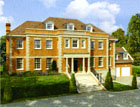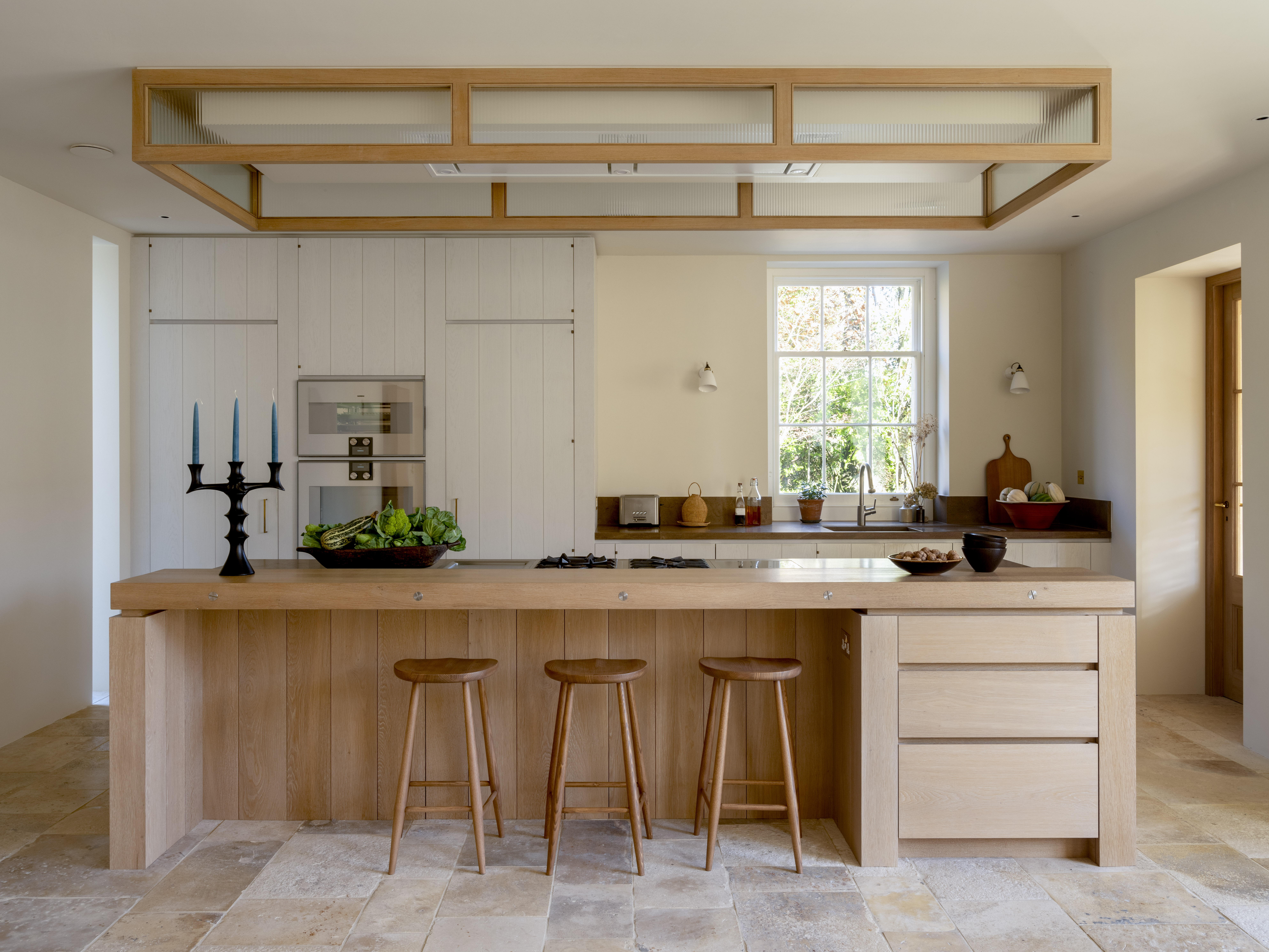Grand Designs Getting Grander
Development needn’t spoil a historic country estate as these projects demonstrate


All too often, the use of ?enabling development? whereby planners allow developers to offset the cost of restoring an important listed building by permitting the construction of a number of new homes within its immediate grounds results in once-grand houses being lost in a sea of executive ?boxes?. Now two exemplary restoration projects show how sensitive use of enabling development can even enhance the original setting of a historic country mansion.
In the late 1800s, Widmerpool Hall at Widmerpool, 10 miles south of Nottingham, was the heart of a thriving 4,000-acre estate owned by the wealthy Robertson family, who remained lords of the manor until the 1920s. The present hall was built in 1872 by Maj George Coke Robertson, who chose the site for its tranquil wooded setting overlooking the village church and the surrounding Keyworth Wolds. He chose as his architect Henry Clutton, a well-established designer of church buildings and country houses with the unusual reputation of working meticulously both to time and to budget.
But Clutton was also a man of flair and imagination, with a passion for the mid-Victorian Gothic Revival style qualities which he employed to great effect at Widmerpool Hall, one of his last projects. No expense was spared in creating Maj Robertson?s grand new country seat, which was built of Bath stone, at a time when it had to be hauled by cart from Nottingham station. One of the more poignant features of the extra-vagant ?Jacobethan? building, with its ori-ginal fireplaces, moulded ceilings, oak panelling and huge stained-glass windows, is the Italianate clock-tower without a clock a tribute to the major?s wife, who died before the hall was completed.
In recent years, Widmerpool Hall was the regional headquarters of the AA. Now developer Country & Metropolitan Homes is transforming the splendid Grade II-listed building into nine sumptuous two-and three-bedroom apartments, at prices ranging from £400,000 to £1.2 million. It has also commissioned conservation specialist Maber Architects to design a new West Wing, a mews of 11 three- and four-bedroom houses, priced from £475,000 to £550,000. Four large private houses will be built in discreet locations around Widmerpool?s 20 acres of wooded, landscaped grounds. Sales of the properties are being handled by Hamptons International (0113?245 0500).
Berkshire-based Millgate Homes has adopted a similarly enlightened approach at its recently launched Ide Hill Park scheme near Sevenoaks, Kent, where eight large Georgian-style country houses are being built in the his-toric 37-acre grounds of The Philippines, a Grade II-listed Italianate mansion built by globe-trotting painter Joshua Wilson Faulkner (a great-great-great-grandparent of the Duchess of Cornwall) in 1834. The original Ide Hill was a 16th-century hunt-ing lodge used as a secret rendezvous by Henry VIII and his future queen, Anne Boleyn of Hever. The house stands high on a hill overlooking the North Kent Downs, and in times of unrest, a beacon transmitted alarm signals from across the Downs to Shooters Hill at Eltham.
Following Faulkner?s death in 1874, The Philippines eventually passed to John Smear, a house decorator who extended the house to the south, and commissioned the Arts-and-Crafts architect George Walton, a pupil of Charles Rennie Mackintosh, to refurbish the great hall and drawing room between 1902 and 1908. Later in 1908, Walton painted the huge mural of Diana and Actaeon which dominates the grand central staircase. In a ground-breaking joint venture with restoration specialist P. J. Livesey, the manor house will be converted into seven grand apartments, and the nearby stable courtyard into seven mews cottages.
Five of the new country houses will be laid out as a crescent below the manor house, and have the same dramatic views over the High Weald of Kent; a further three will be hidden among trees to the rear. All will have private landscaped gar-dens of between two-thirds of an acre and three acres. Designer Mark Wilkinson has been commissioned to produce hand-crafted furniture for each kitchen, bedroom, bathroom, study and dressing room, and some of the mansions will have indoor swimming pools or hot tubs. Selling agents Savills (01732 750188) quote guide prices of £625,000 and £1.8m for the mansion apartments and mews cottages, and from £3.5m for the new country houses.
Sign up for the Country Life Newsletter
Exquisite houses, the beauty of Nature, and how to get the most from your life, straight to your inbox.
This article first appeared in Country Life magazine on November 30, 2006
Country Life is unlike any other magazine: the only glossy weekly on the newsstand and the only magazine that has been guest-edited by HRH The King not once, but twice. It is a celebration of modern rural life and all its diverse joys and pleasures — that was first published in Queen Victoria's Diamond Jubilee year. Our eclectic mixture of witty and informative content — from the most up-to-date property news and commentary and a coveted glimpse inside some of the UK's best houses and gardens, to gardening, the arts and interior design, written by experts in their field — still cannot be found in print or online, anywhere else.
-
 Designer's Room: A solid oak French kitchen that's been cleverly engineered to last
Designer's Room: A solid oak French kitchen that's been cleverly engineered to lastKitchen and joinery specialist Artichoke had several clever tricks to deal with the fact that natural wood expands and contracts.
By Amelia Thorpe
-
 Chocolate eggs, bunnies and the Resurrection: Country Life Quiz of the Day, April 18, 2025
Chocolate eggs, bunnies and the Resurrection: Country Life Quiz of the Day, April 18, 2025Friday's quiz is an Easter special.
By James Fisher